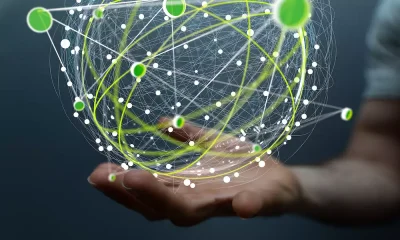Technology
Electronic Signature Versus Digital Signature Explained

Do you know the difference between an electronic signature and a digital signature? If you’re like most digital users, you’ll assume a digital signature is an eSignature – right? Umm wrong. While both terms are often used interchangeably, they have different functions and features, and in this article, we will explain what they are, just so you can spread the word.
What is an e-Signature, vs a Digital Signature?
The infographic on OneSpan’s blog says an eSignature is a legal concept, and its use is for contracts shared digitally. The signing of the document shows the user’s or signatory’s intent to agree to the terms.
An eSignature can be a symbol, image, biometric fingerprint or even sound, and the user chooses what eSignature they wish to use. Unless the e-Signature is secured with a digital signature, the e-Signature is not verified.
The digital signature is the encryption technology that certifies the eSignatures. Digital signature technology is authorized by certification authorities. The certificate is recognition and assurance for all parties concerned that the digital signature technology has met the required standards and is therefore up to the task.
Significance of E-signature
Hereon in we will refer to the use of online signatures (certified or otherwise) as electronic signatures. As businesses have taken all their administration online, documents are generated electronically, and the e-signature has mostly replaced the need for handwritten signatures.
Ease and Convenience
e-signatures on contracts and sales agreements have provided a level playing field for businesses of all sizes. For example, with e-signatures, there’s no need for face-to-face meetings that chew up time and money. Smaller companies with less staff can have all hands on deck working productively in the business.
Plus documents can be signed by clients and the company without the need for scanning or even emailing the documents as they are accessible by all parties online.
No More Messy Paperwork
Through digitizing the signature process, sales are fulfilled quicker. Please no longer do legal representatives need to travel to and from client locations for signing contracts and sales agreements. Plus, there’s no need for offline storage facilities as everything is stored online and more likely in the cloud.
Improve Security and Safety
Hardcopies have never been safe from manipulation, damage or destruction. Whereas the digital signature offers document authenticity, it also proves the source and has not been tampered with. The online storage of digitally signed documents is even more secure than the hard copy equivalent stored in the locked cabinet in your office.
Hardcopies, as we know, can also be misplaced, tampered with, destroyed and even stolen. Over the years, there have been many crime stories based on criminals going free due to lost evidence.
Digital documents are much harder to manipulate than hard copies, too, as every edit leaves an audit trail. Furthermore, the user can check the date stamps for all action taken, including creation date, revisions, and opens. Many security smarts are also hidden from users’ view but accessible by the administrators and software developers.
e-signatures have reached maturity, and they are used for payroll, loans, employee contracts, RS forms, letters of consent, mortgage services, HR, procurement, and supplier agreements.
The industries using them ubiquitously include
- Financial services
- IT and cybersecurity
- Construction and engineering
- Accounting and Tax
- Healthcare
- Insurance
- Government
Summary
Like all technology disruption, the efficiency of e-signatures has proven invaluable for speeding up sales and identification. Their use improves workflow processes, reduces time and costs, as well as being more environmentally friendly. Just imagine the carbon footprint of all that travel to and from customer sites and paper wastage if e-signatures had not been invented.









